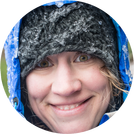
Angela Bohlke is a native Minnesotan, temporary New Orleanian, and current Portlander who spends most of her free time (with her camera and/or dog) hiking, mountaineering, skiing, and traveling to far flung places. She is perpetually in search of a new adventure or interesting project, and found ASC to be a perfect way to put some of these skills to use. Angela came out to the Olympic National Forest for the second year in a row to participate in our marten survey project.
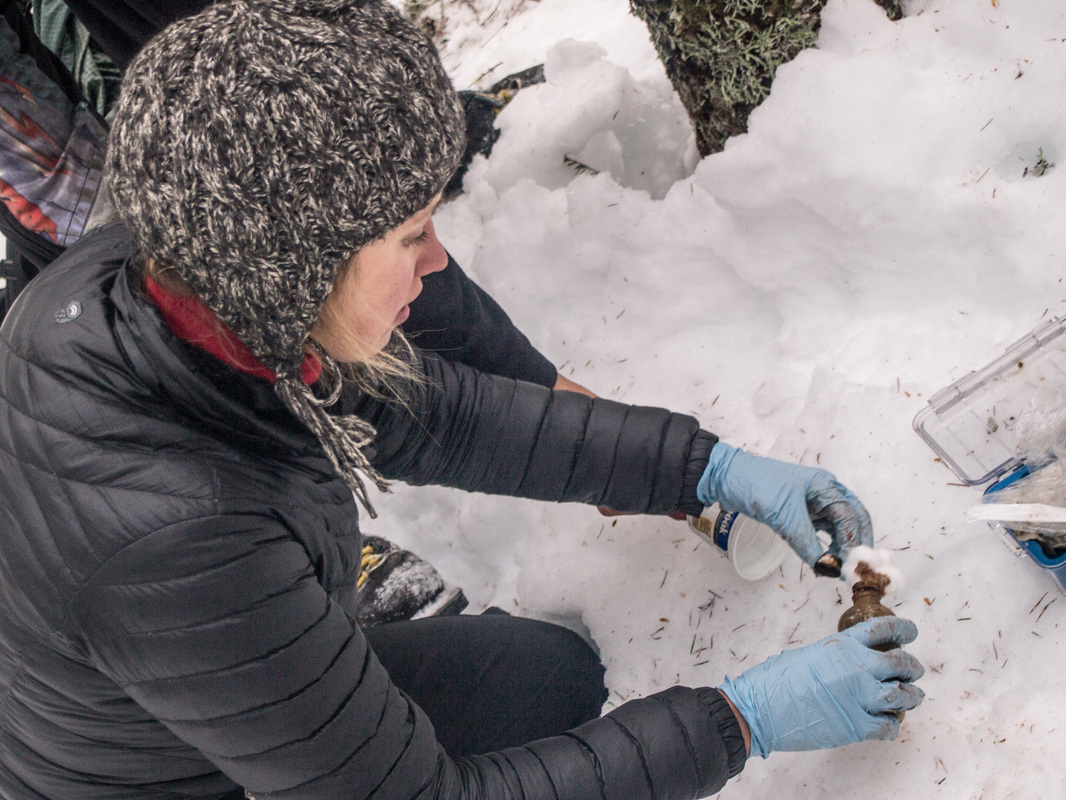
Angela applying the infamous gusto lure.
From Angela:
Beaver carcass, check! Skunk scent, check! Nails, hammer, wire, saw, shears; check! While I am headed into the backcountry of the Olympic National Forest, I’m definitely not packing from my typical stash of extra lightweight jackets, tents, and sleeping bags. It’s my twelfth winter trip up here in the last two years, maintaining two camera sites each winter. While I am generally anything but a creature of habit in the outdoors, always seeking trails and summits to add to my ever-growing list of new places to see, I actually have come to enjoy returning to the same place.
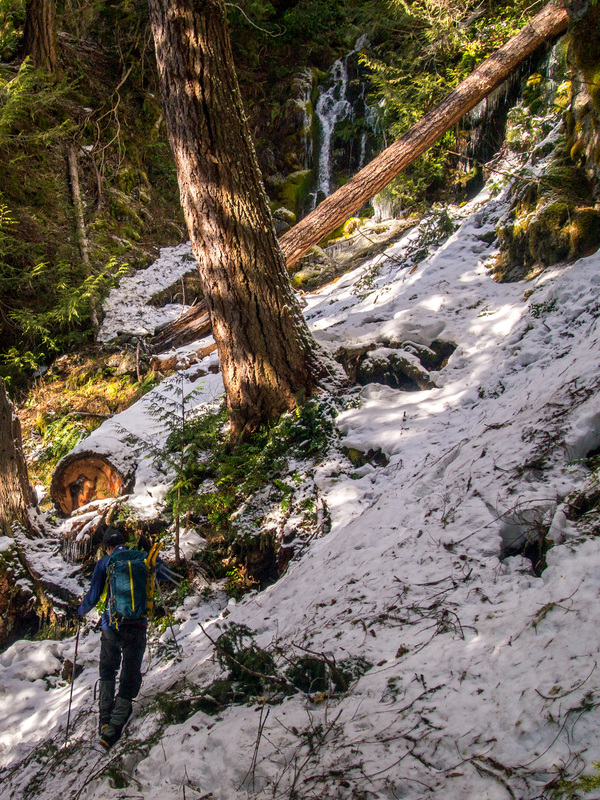
Repeat trips to the same spots in the Olympic National Forest build our scientific understanding and a deep connection to the place.
When I first became involved with Adventurers and Scientists for Conservation’s
Pine Marten Survey after responding to a call for volunteers that I came across in my Facebook feed, I was both excited and nervous about what I was committing to. My partner for the project and I arrived late at the forest service house that first night where volunteers were congregating. We were given possibly the warmest and most spirited welcome by the other volunteers on the project. Enthusiasm was high! GPS devices, maps, wildlife tracking books, and cameras were scattered about and I couldn’t wait to get started. And wait, a reporter from NPR was here too (
listen to the story here)!?! After a morning orientation and some gear packing, we were ready to head out. Jeff, a guide working with ASC, accompanied us on our icy ski into the backcountry and shared his wealth of naturalist knowledge en route to establishing our two wildlife camera sites. Perhaps the most surprising find of the day was just how bad gusto, an odoriferous lure used for the project, smelled. There were the beaver carcasses that we nailed to a tree as bait too, but the reek was insignificant compared to the gusto.
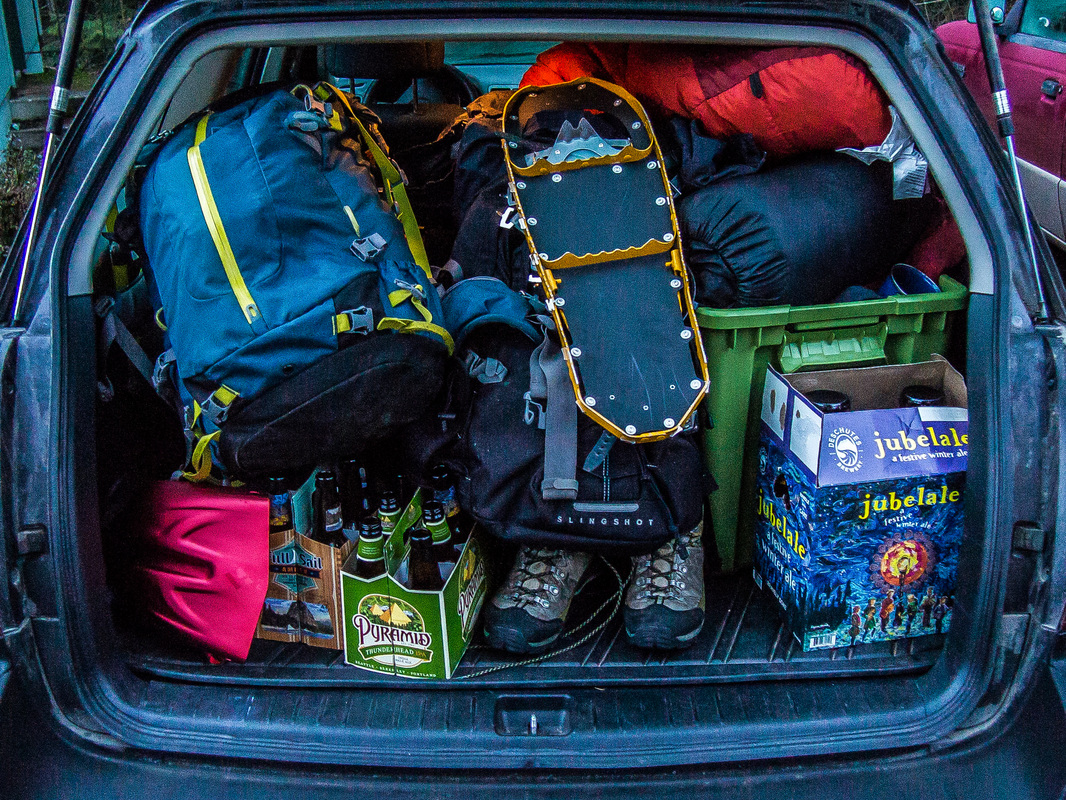
Packed to the brim for another weekend in the Olympic National Forest.
The project was so fun that first winter and I decided to do it again the this winter with two new stations, heading to the camera sites to put new memory cards and batteries in every two to three weeks. Through this project, I developed an unexpected appreciation for seeing the often subtle changes in the winter landscape. I have become more acutely aware of minutia on the paths I was frequenting. Every couple weeks, we received emails from the biologist on the project detailing what had been spotted on the cameras. Perhaps the most surprising was the amount of cat activity at the camera sites— those sneaky bobcats and mountain lion were actually around in the forest that otherwise seemed so quiet and predator-free. The scientific information that the biologist on the project routinely provided helped piece together the purpose of what we were doing and was motivating. But no matter how much Gusto I put near my site, I couldn’t bring a marten in.
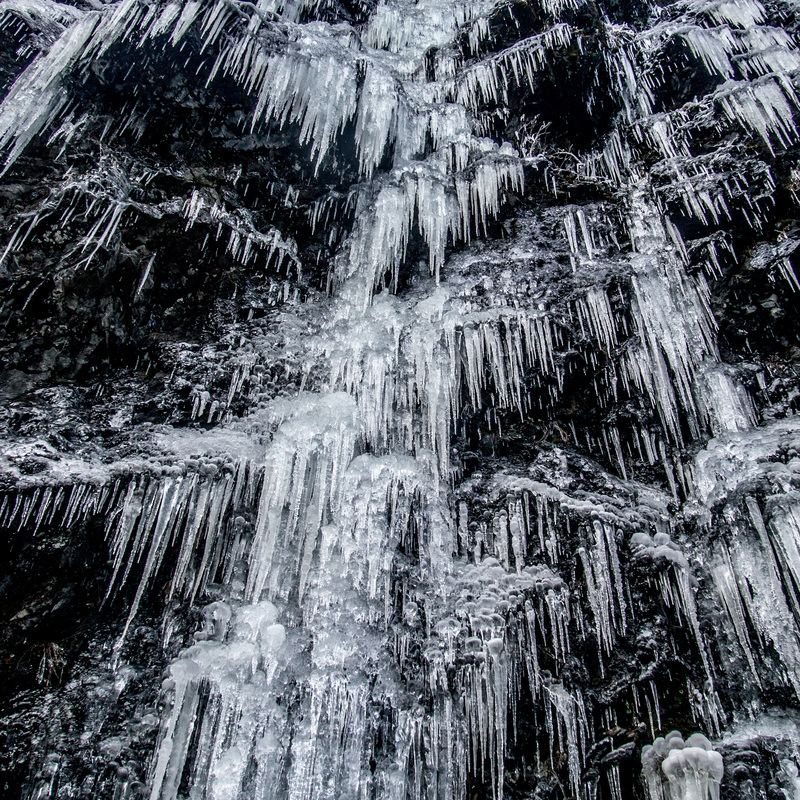
“Through this project, I developed an unexpected appreciation for seeing the often subtle changes in the winter landscape.”
My history in the outdoors prior to the pine marten project was extensive. I’m a pretty serious multisporter but have really developed into more of a mountaineer in the last couple years, enjoying the connection with the mountains and the other climbers on my team. After my third trip on the project, I started to feel sad as I drove away, which surprised me. Through the process of returning to this same place with a purpose, scouring the ground for tracks and other biological clues, all the while contemplating the effects that our growing society has on wildlife and the environment, I had developed a connection with the area that was unexpected, unique, and more significant from what I felt as a mountaineer. I admired the other volunteers and found our shared interest in wanting to do something other than just ‘take’ from the outdoors inspiring. In the end, we didn’t find a marten, but we all found a lot more.
Keep up with ASC by subscribing to ASC’s blog, liking us on Facebook and following us on Twitter (@AdventurScience), Instagram (@AdventureScience) and Google+.





